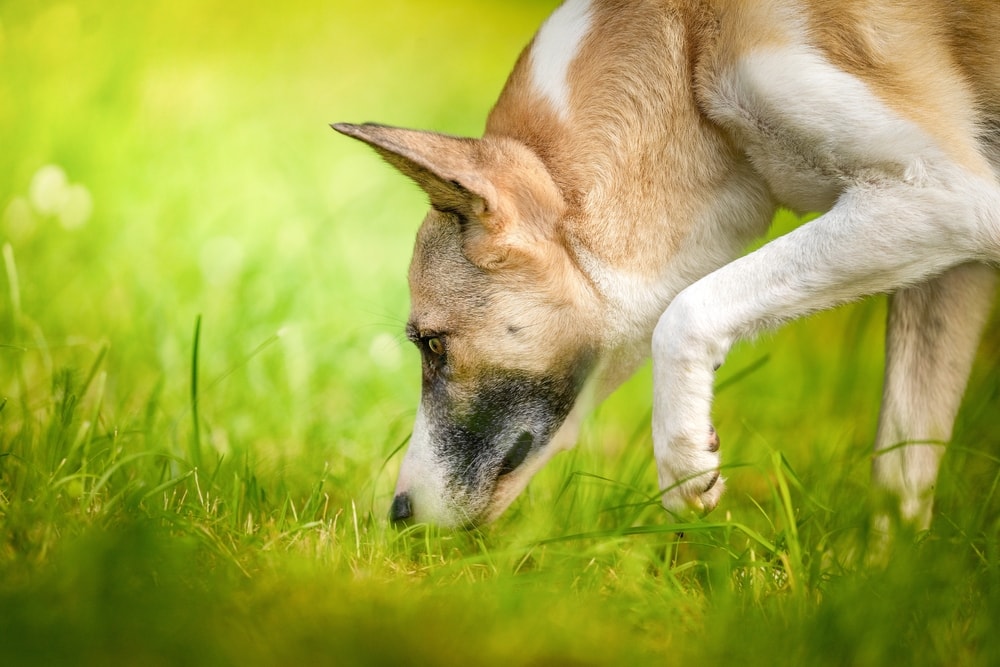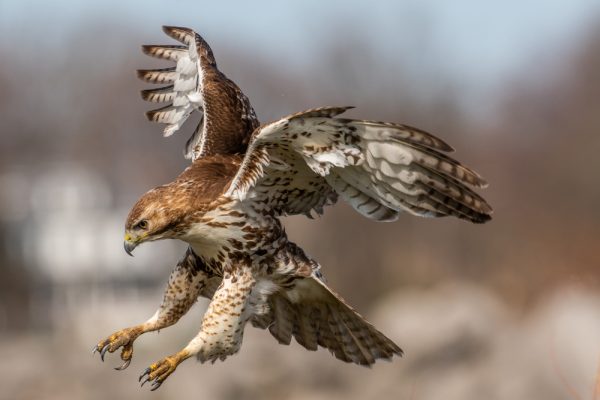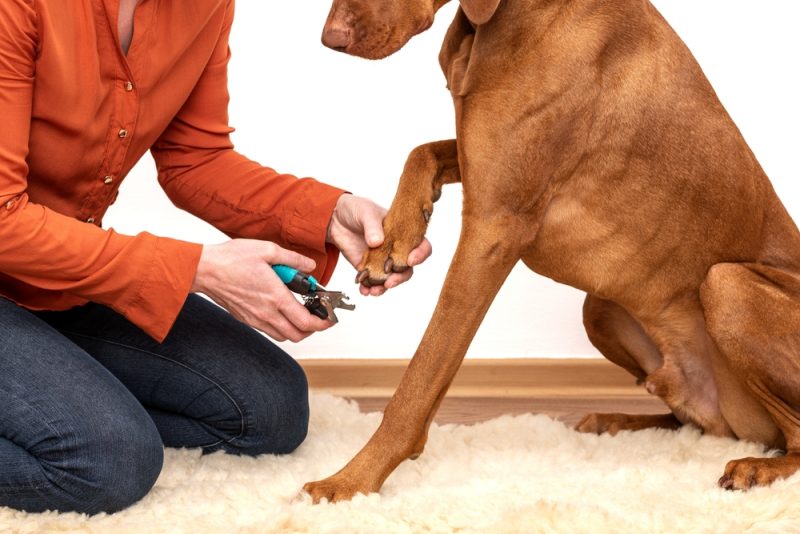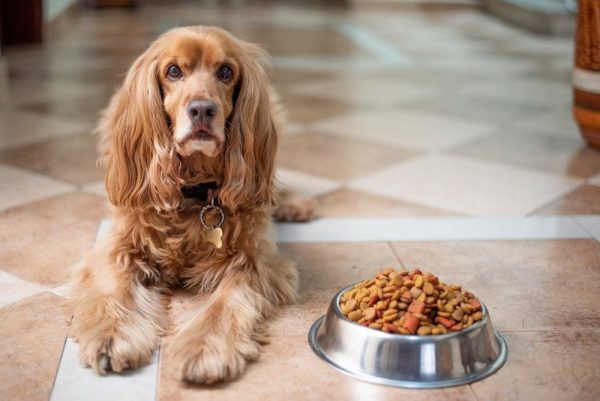Dogs have an astounding sense of smell. The canine nose contains 200–300 million scent receptors, depending on the breed, and humans have a paltry 5 million.1 Dogs have a second scent organ to boost their sniffing abilities. Their sense of smell is so acute that they can identify diseases such as diabetes and cancer after a brief whiff of a biological sample.
Dogs understand the world mainly through smell, relying on it as we do on our eyes. It’s why your canine buddy loves to stop and sniff during walks; it’s how they learn who’s been around, for how long, and when. You may wonder if dogs can smell coyotes; the answer is yes. Dogs can smell coyotes just like they can sniff out the presence of cats and humans. Depending on the conditions, dogs can pick up coyote scents from as far as 12 miles away.2 Read on for more information about dogs and coyotes.

What’s a Coyote?
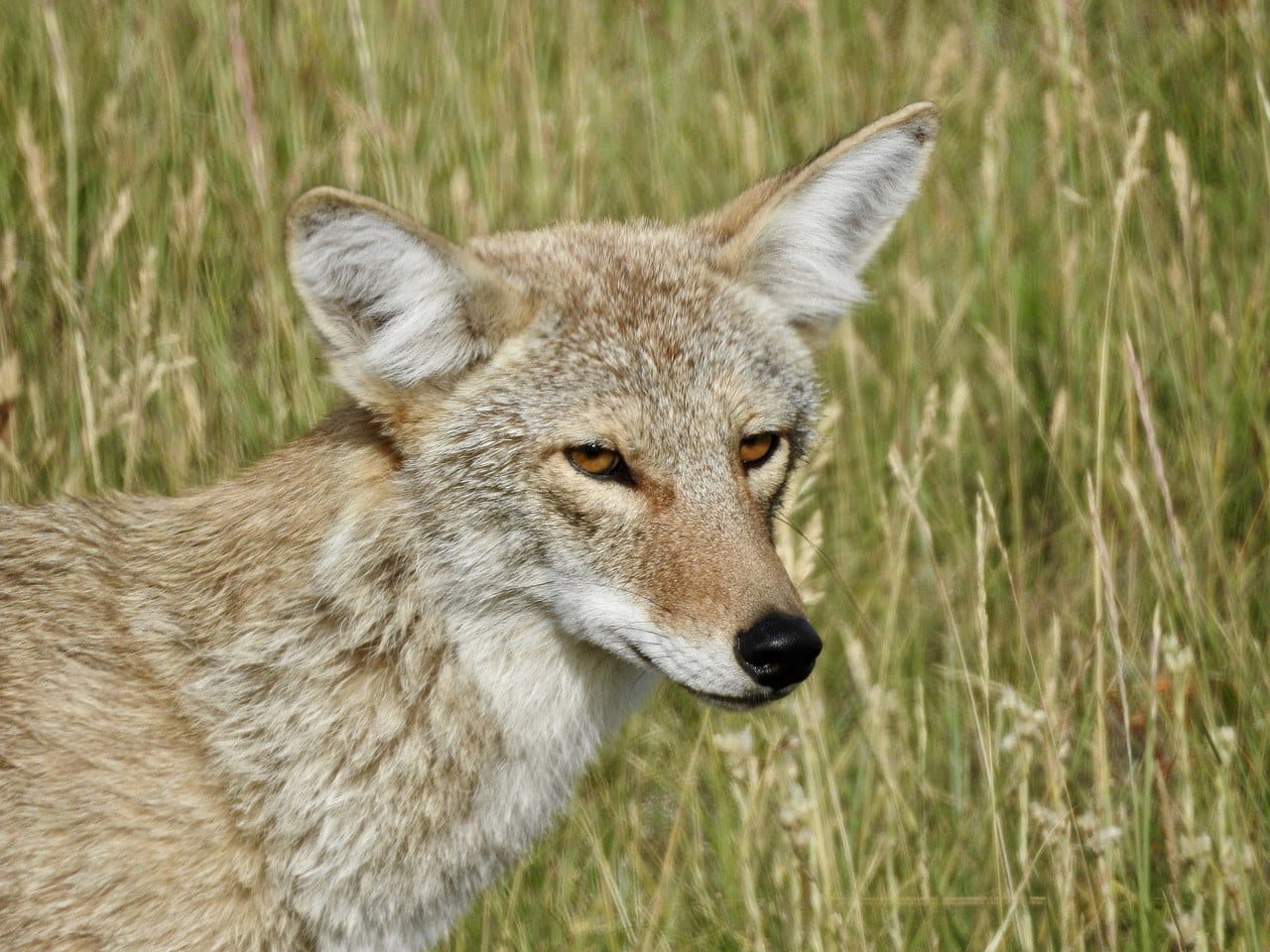
Coyotes, technically Canis latrans, are members of the Canidae family. They’re native to North America and genetically related to wolves. Coyotes are smaller than their Canis lupus cousins, which often weigh more than 80 pounds and grow to over 30 inches at the shoulder. Male coyotes can reach up to 24 inches at the withers and weigh up to 50 pounds. Some are over 4 feet long, nose to tail. Most live around 8 years in the wild, but captive animals often reach their 20s.
Most have rough gray or reddish coats, but coyotes in mountainous areas have fur highlighted with black and white splashes. Those living in deserts have a light shade of gray. Coyotes have long, bushy tails and are recognizable by their white facial masks.
They’re primarily carnivores; around 90 percent of their diet is meat, particularly snowshoe hare and deer. They’ll also eat birds, snakes, fish, prairie dogs, and marmots. Coyotes hunting cooperatively in pairs or packs can bring down larger prey, such as elk and wild sheep. When hunting larger prey, coyotes focus on easy-to-catch individuals, like those caught in ice or weakened by hunger. Coyotes will also scavenge and eat roadkill.
These incredibly adaptable animals also augment their diets with fruit, insects, and grass. When having difficulty finding or catching prey, coyotes turn to fruit, including blackberries, apples, and peaches. They’ll also eat peanuts, carrots, and watermelon. Desert-dwelling coyotes regularly consume caterpillars and beetles, particularly in the spring. They regularly prey on livestock in farm areas and have been known to kill cats and small dogs.
Coyotes originally had a range that stretched from the Sonoran Desert to Alberta, Canada, but after wolf populations began to decline, these medium-sized predators expanded into Central America and Alaska. Coyotes have substantial populations in Eastern Canada and the northeastern part of the United States, but they can now be found throughout the continental United States. Only the Darien Gap prevents them from moving into South America. They don’t have many natural predators, but mountain lions and wolves occasionally kill coyotes.
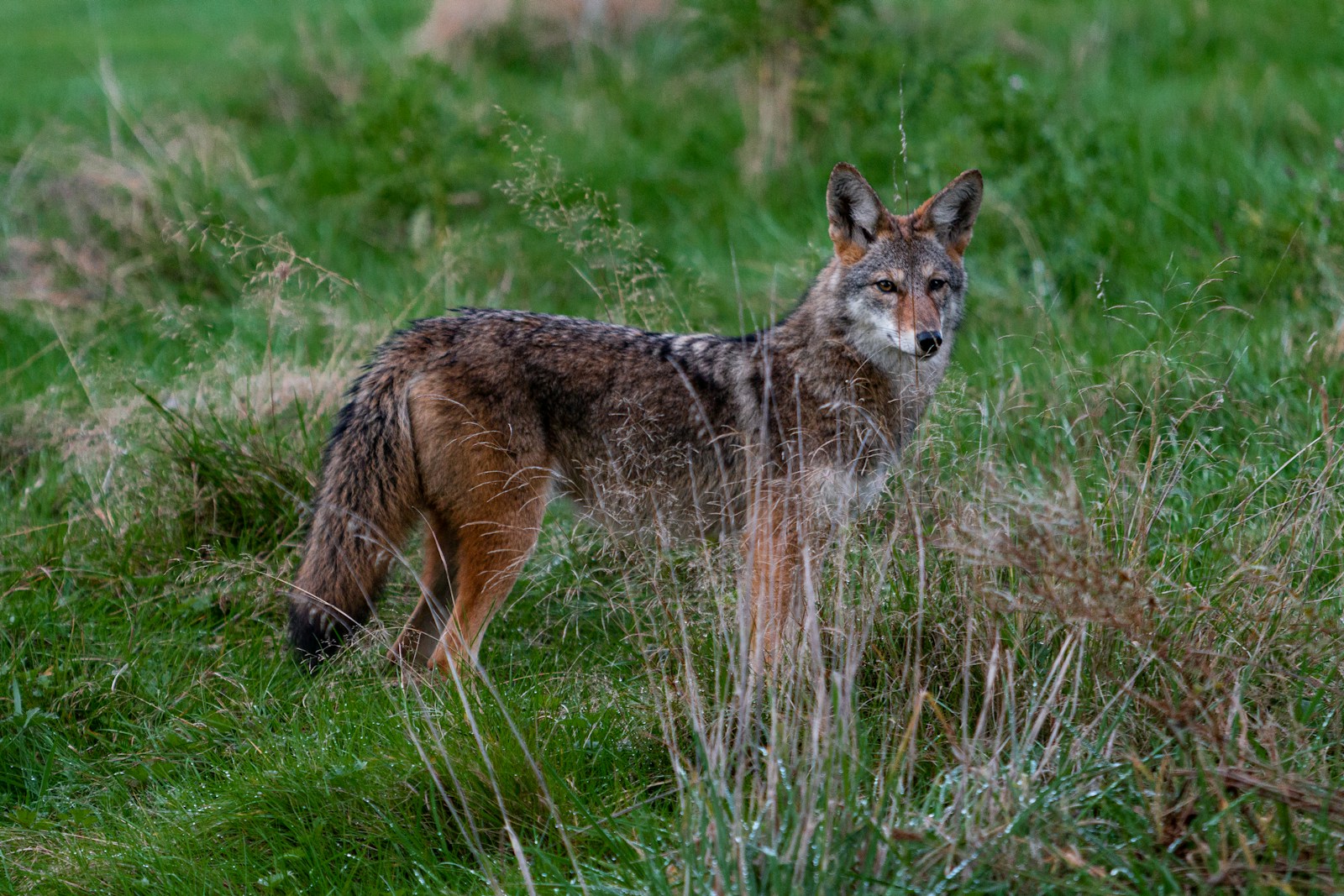
Can Dogs Mate With Coyotes?
As members of the same genus, coyotes and dogs can interbreed, much like dogs and wolves and wolves and coyotes! There are three primary North American hybrids: coydogs, wolf dogs, and coywolves.
Coyote/dog mixes are called coydogs and are also known as dogotes. The mix usually involves a coyote father and a domestic dog mother, partly because female coyotes appear disinclined to mate with domestic dogs. Coydogs and dogotes were intentionally bred in pre-Columbian Mexico as well as in Canada, where the large hybrids were used as sled dogs. Coyotes are still actively bred as pets in some places and have become quite popular despite the behavioral problems.
Coydogs aren’t that common in the wild as the natural breeding seasons of the two species don’t overlap; coyotes tend to breed during the winter, while domestic dogs prefer to do so in the spring. Depending on the size of the dog parent, coydogs can be larger than coyotes, with some reaching up to 27 inches at the withers and weighing more than 100 pounds. And they often display their mixed ancestry by producing bark-yips.
Wolfdogs are wolf-dog mixes that have been around for millennia. They can be found almost anywhere gray wolf populations have come under pressure and had regular contact with domestic dogs. Humans have also selectively bred these two similar animals to intentionally create domestic breeds with wolf genes, including the Saarloos Wolfdog and the Czechoslovakian Vlcak.
Coywolves are mixes of coyotes, wolves, and domestic dogs, and they’re frequently found in the wild. Coywolves resemble small wolves but exhibit behavioral characteristics inherited from all three of their ancestors. Most are incredibly adaptable, can live in urban environments, and capture prey in forests. Many eastern North American “wolves” are genetically coywolves. Even their vocalizations reflect their hybrid ancestry since many start with a wolf-like growl and end with a hail of coyote-like-yips.

Conclusion
Dogs can smell coyotes up to 12 miles away or so, depending on the conditions. But just because your dog doesn’t react to a coyote doesn’t mean they haven’t figured out there’s one in the neighborhood. Coyotes are members of the same genus as dogs, and the two often display similar instinctual behaviors, such as marking and howling.
The two species can interbreed, creating coydogs and dogotes. Coyotes can also mate with wolves to create coywolves, who usually have a bit of domestic dog DNA mixed in. Dogs probably smell coyotes with the same precision with which they sniff out other canines, including domestic dogs and wolves.
Featured Image Credit: Pawtraits, Shutterstock
